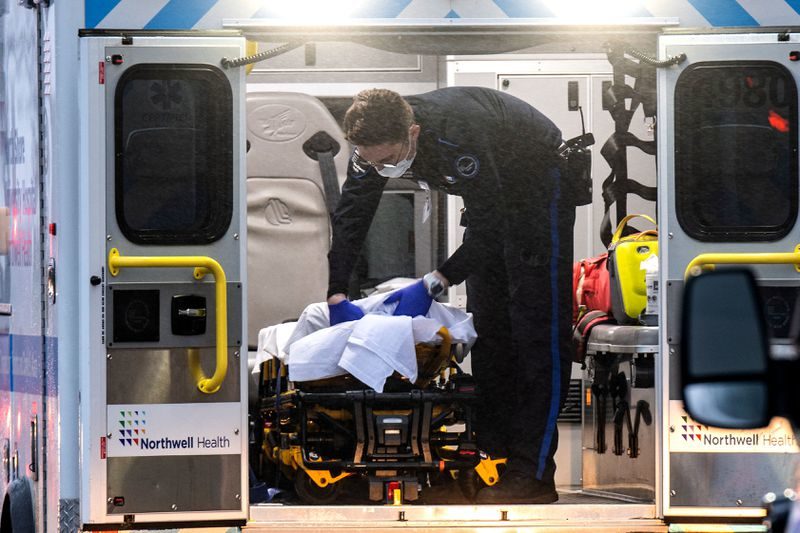The new orders from the Regional Emergency Medical Services Council of New York City say that "no adult non-traumatic or blunt traumatic cardiac arrest is to be transported to a hospital with manual or mechanical compressions in progress" unless the person's heart restarts at the scene.
The council — which sets policies followed by private and government EMS crews in the five boroughs — issued the order to free up emergency room space for the continuing onslaught of COVID-19 cases.
Comment: Isn't there some medical negligence involved here? Not to mention the fact that there are empty hospitals all across the country.
"In the event a resuscitation is terminated, and the body is in public view, the body can be left in the custody of the NYPD," the directive notes.
Traditionally, EMTs responding to cardiac cases rush their patients to the hospital to continue resuscitation efforts even when the patient has died.
Under the new directive, if CPR is not successful at the scene and the patient has died, "we are terminating the rescue in the pre-hospital setting," said Dr. Josef Schenker, chair of the council's Regional Emergency Medical Advisory Committee.
"It already happens today, but now we're making it a rule," Schenker told the Daily News.
In most cases, attempts to resuscitate a patient at the hospital after they flatline in the field "are unsuccessful," Schenker said.
Yet, in the COVID-19 world, performing CPR in the back of an ambulance on the way to the hospital could prove more dangerous for EMS members.
"When you have someone performing CPR on a patient in the back of an ambulance, it can aerosolize the virus and contaminate the entire ambulance, Schenker said.
According to the new directive, EMTs can only continue resuscitation efforts in the ambulance if "there is imminent physical danger to the EMS providers on the scene," the directive notes. Such danger might include violence or a violent threat to EMS workers.
Instead of transporting the body to the nearest emergency room, EMTs are directed to contact the city's medical examiner or an NYPD DOA removal team to handle the remains.
"Emergency departments are severely overcrowded and transporting patients pronounced on the scene only increases emergency departments workload and potentially exposes emergency department staff and patients to COVID-19," the Regional Emergency Medical Services Council said in a statement.
The order is just one of several changes in routine emergency response protocols as the city continues to get slammed by coronavirus cases.
The Regional Emergency Medical Services Council on Thursday also loosened its rules on who can staff advance life support and basic life support ambulances as the pandemic continues.
The council will allow a bare-bones staff of one paramedic and one EMT in an advanced life support vehicle and one EMT and one certified first responder in a basic life support vehicle.
Traditionally, the city requires two paramedics to staff an advanced life support vehicle and two EMTs to man a basic life support vehicle, officials said.
On Wednesday, city firefighters trained as paramedics and EMTs were ordered to assist the FDNY's overloaded medical services bureau as part of a "doomsday scenario," according to union leaders. As part of the service changes, roughly 209 FDNY firefighters with emergency medical technician licenses are now manning rapid response vehicles to respond to sick calls.
EMS responded to 5,902 medical calls on Wednesday, officials said.




Reader Comments
to our Newsletter